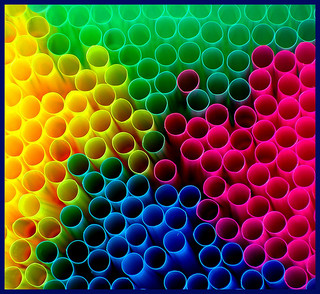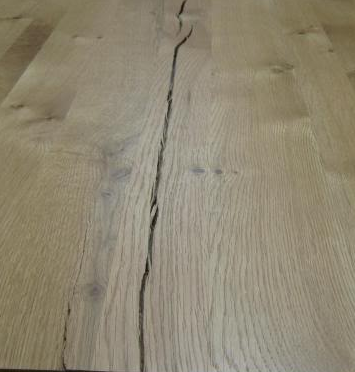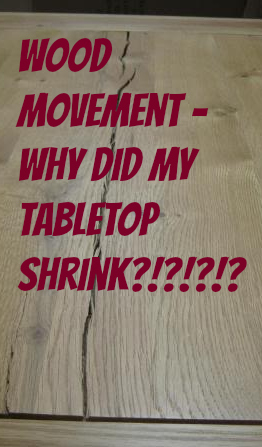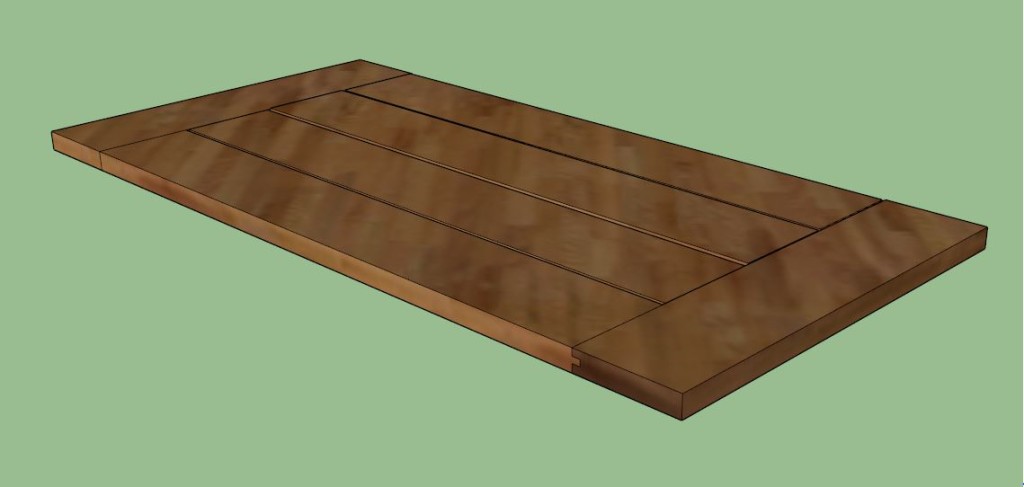So you built a table from one of those on line plans, maybe one with breadboard ends. Six months later you are wondering “why did my table top shrink?” Why is is cracking and splitting? What causes wood movement?
The biggest reason is what it was made with. You see, solid wood is like a big sponge. In the winter, with central AC, it drys out and shrinks. In the humidity of summer, it soaks up moisture and swells. Every kind of wood reacts a little differently.
So, why does the wo od move?
od move?
Imagine that wood is made up of a bunch of straws, running with the grain. As they suck up the water in the air, they swell. This means the wood grows or shrinks across the grain.
Plywood and MDF are not affected by moisture in the air like solid wood, a good reason to consider their use for large panels or table tops.
How much it moves depends on the species, the panel width and how much the humidity changes. There is a decent calculator on the Woodweb website. The greatest risk for movement is with larger panels and table tops. For example: a 38″ wide, red oak tabletop, assembled in humid summer conditions, can shrink 1/2″ in the winter.
Dealing with Wood Movement
Solid wood that you buy from the Big Box stores is kiln dried to 6-8%, while building materials (2×4, 2×6, …) are dried to about 12%. As your 2×4’s continue to dry out, they shrink, twist and warp, each in it’s own direction. That’s why a 38″ “farm table” made from glued up 2×6 pine lumber, can move almost 1/2″ as well.
One option, often seen on Pinterest, is to use bread boards (a board attached across the ends of a table) screwed (pocket screws) to every board, you risk the top twisting, splitting or just tearing itself apart. Most of the severe movement will happen in the first 6 months as the boards finish drying out.
A traditional breadboard was made by putting a groove down one edge, and a tongue, or tab, on ends of the table top boards. This tongue sits in the groove. The breadboard is pinned to the middle board of the top and the rest of it allowed to float. This means the table can shrink and grow, without binding. This arrangement is also supposed to help keep the boards flat.
If I were building a farm table from big box store 2×4’s, I would have to let them sit for a couple of months to finish drying out, and they would probably twist while drying. I probably would not add breadboard ends. I might add battens, or cross pieces under the top to try and “hold” things together. I would attach them to the center board with a single screw, and I would add slots or oversized holes for the other screws going into the other boards. That way the top could move without binding.
But I would rather not use construction grade 2x’s for a tabletop. I would buy kiln dried lumber (all the inch thick stuff at the Big Box), and either buy a pre-made panel, or glue one up myself. These boards are dried more, and are more stable.
For a more traditional table, made by gluing boards together (upcoming project!), I would use table top clips (metal or wood) to attach a top. Both of these screw to the top and fit into a groove in the apron running around the edges.
Can’t I just seal the top?
Can’t I just seal the top with 72 coats of polyurethane? NO! Moisture moves through all finishes. Finish will slow it down, but over the coarse of a season, the panel will move.
Also, you need to finish both sides the same. This is to help keep the top from warping. It warps, because the finish slows down the moisture on one side, and the other swells up. Putting a film on both sides equalizes the swelling.
Can you build a table with 2×6’s? Yes you can, but you may not be happy in a couple on months. Be careful, do your homework and find a better way.
What do you think? Has this happened to you? Am I being too critical? Drop me a comment and let me know what you think.






I want to make sure that I get the right wood to make a cutting board with. It makes sense that different kinds of wood would be better than others! I’ll make sure that the would I get is kiln dried. I don’t want to have to worry about it expanding or anything like that!
Even kiln dried wood will expand and contract with changes in humidity. Make sure you use hardwoods with similar hardness ratings. Walnut, Maple, Birch, Cherry, Oak, Yellow Heart, Purple Heart, and Rosewood are popular choices.
I paid a fortune for a “custom” farmhouse table that now has a huge gap between two boards almost the length of the table. The company that built it refused to fix it and I didn’t want the hassle of small claims although I know we would have won the suit. The underside of the wood isn’t finished. What if anything can I use to fill the gap?
Can you post some photos? above and below the top. What can be done, will depend on the materials and how the top was assembled.